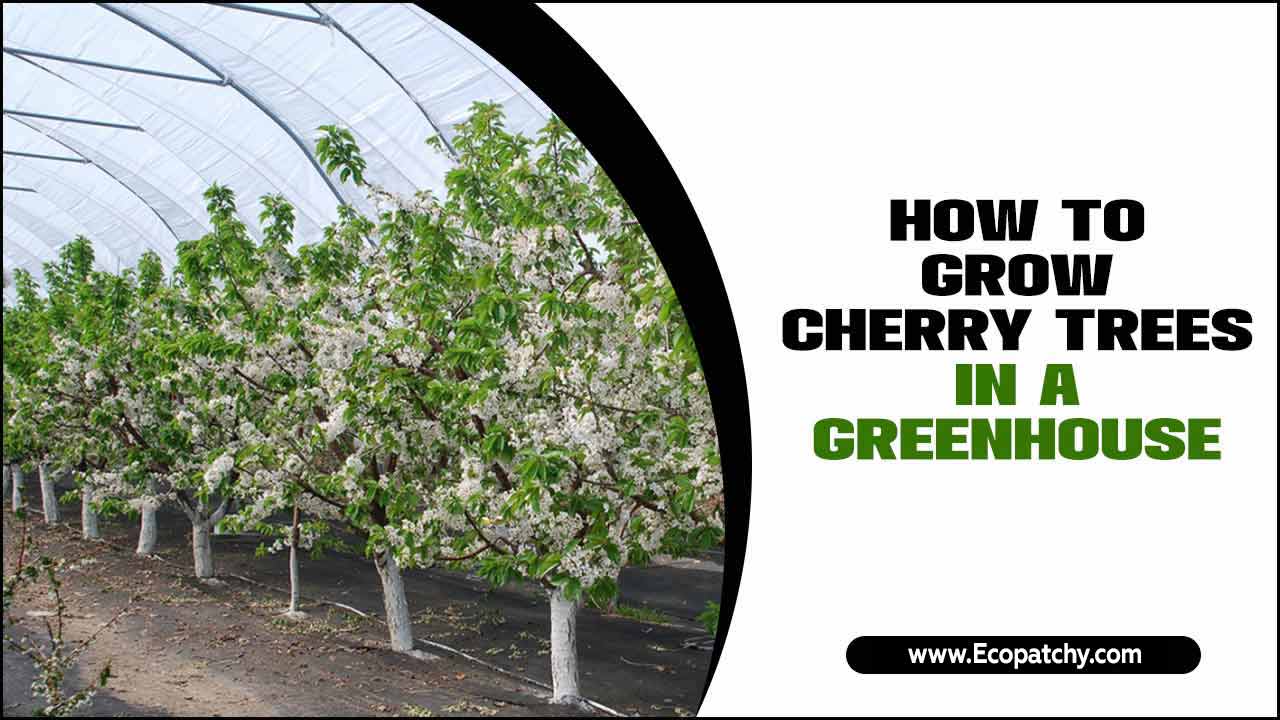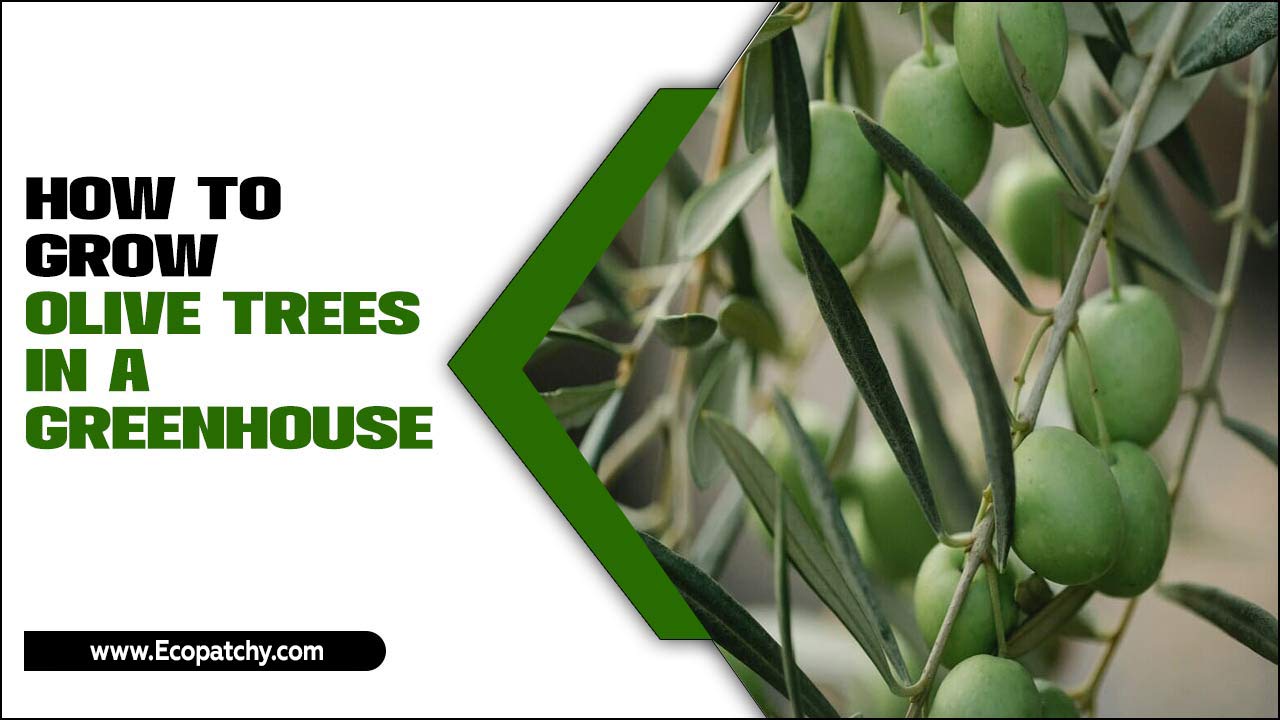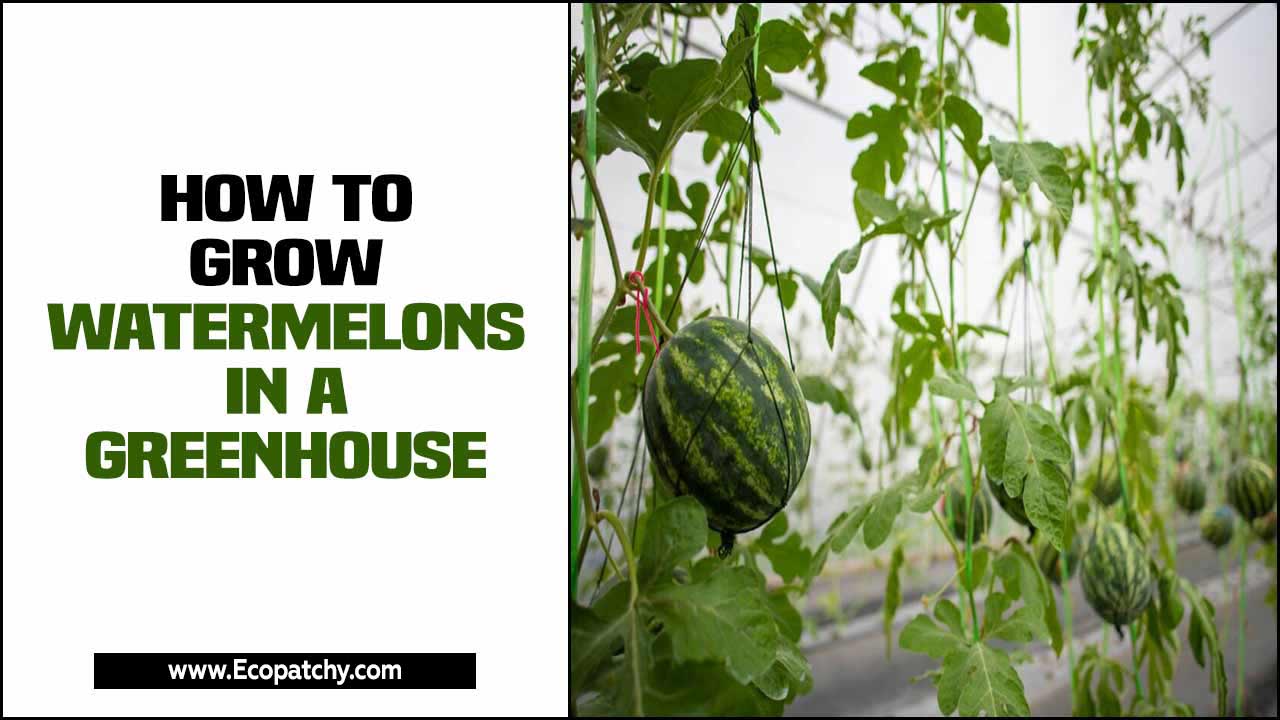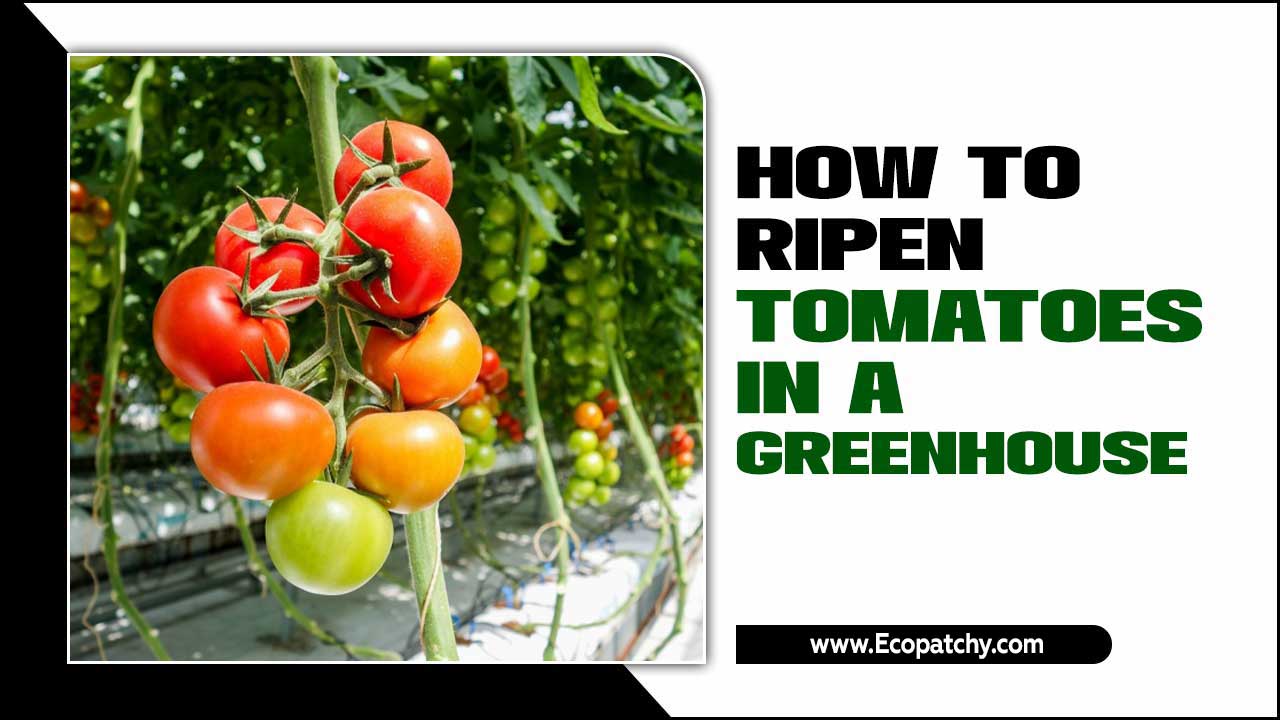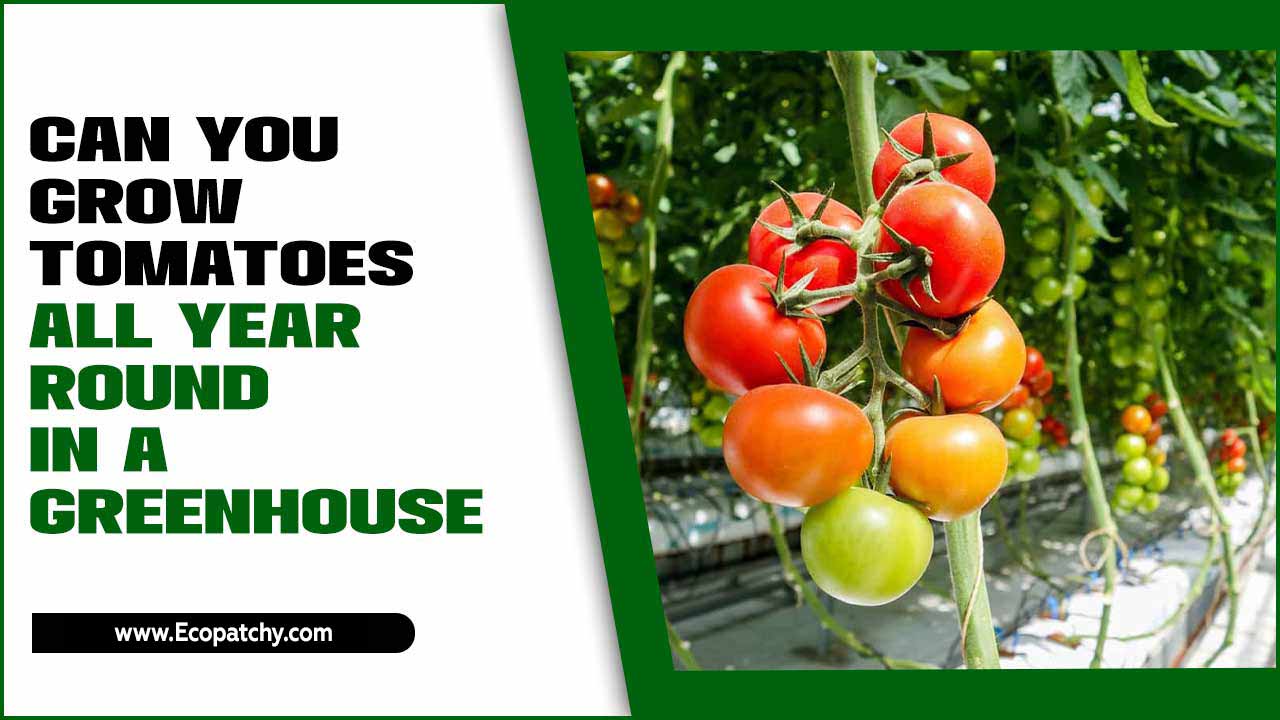Greenhouses have long been used to extend the growing season and provide a controlled environment for plants to thrive. This question has been on the minds of many gardeners and farmers alike.
With the popularity of exotic fruits and the increasing demand for locally-grown produce, it is worth exploring the possibility of growing these tropical delights in a greenhouse. Here, we will explore whether can you grow tropical fruit in a greenhouse, how to do it step-by-step, and which fruits are most suitable for this type of cultivation.
We will also cover the benefits of growing tropical fruit in a greenhouse, common challenges and troubleshooting tips, harvesting and storing techniques, and tips for caring for your plants.
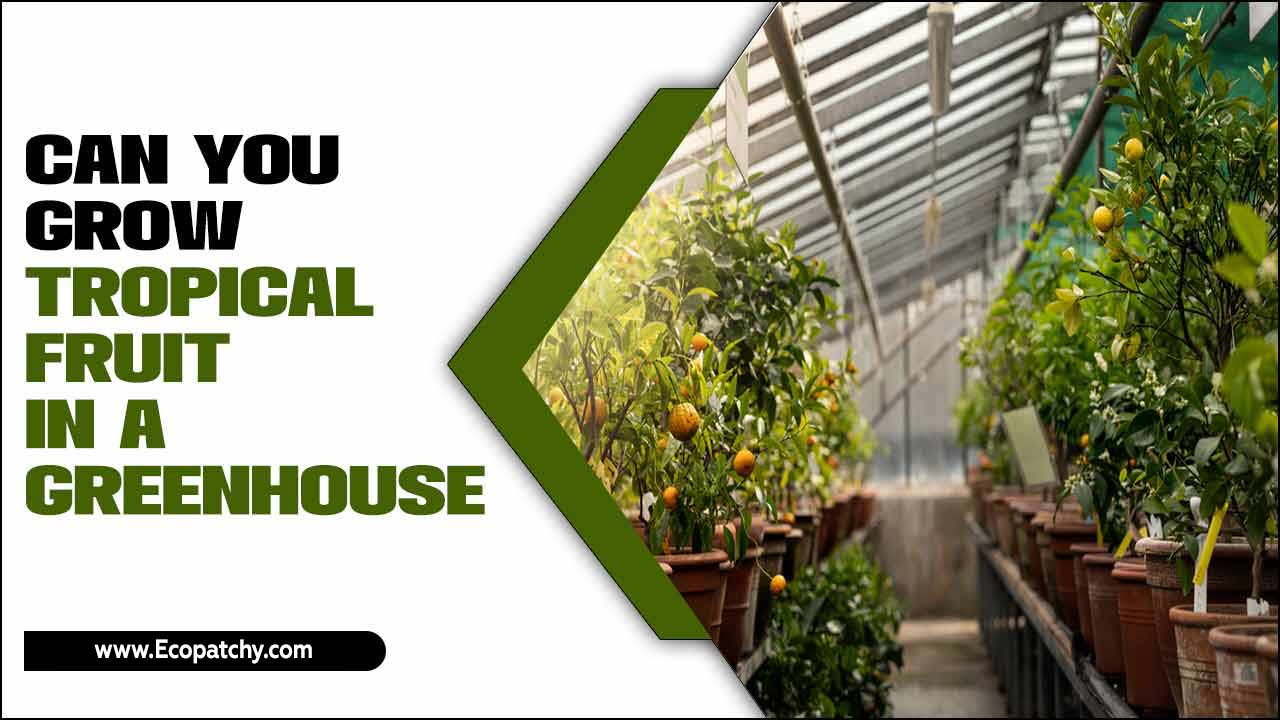
How Can You Grow Tropical Fruit In A Greenhouse: A Step-By-Step Guide
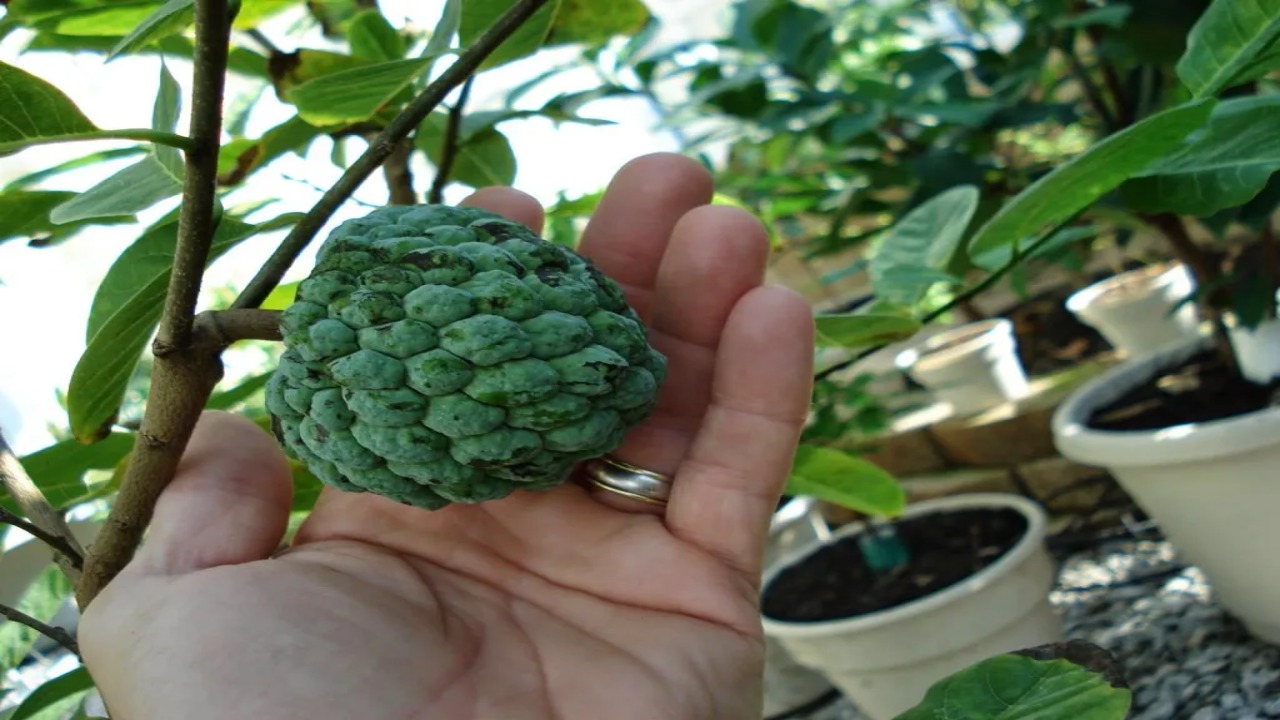
Yes, it is possible to grow tropical fruit in a greenhouse. Greenhouses provide a controlled environment where temperature, humidity, and light can be manipulated to mimic the tropical conditions in which these fruits thrive. With proper care and attention to the specific needs of each fruit variety, you can successfully cultivate tropical fruits such as bananas, pineapples, mangoes, and papayas in a greenhouse.
This allows individuals in non-tropical regions to enjoy the delicious flavours and nutritional benefits of these exotic fruits. Growing tropical fruit in a greenhouse is a great way to enjoy these exotic fruits, even in non-tropical climates. Here is a step-by-step guide on how can you grow tropical fruit in a greenhouse:
Choose The Right Tropical Fruit
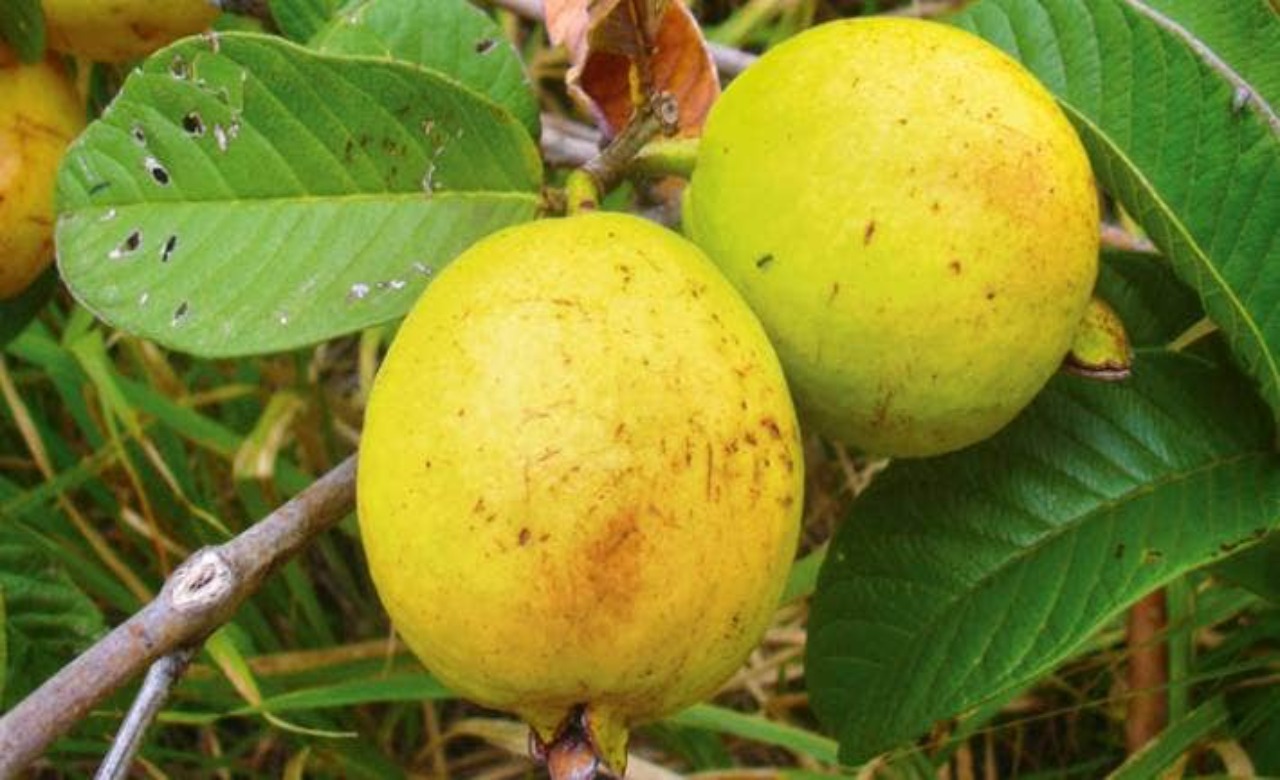
For growing tropical fruit in a greenhouse, selecting the right fruit varieties is crucial. Not all tropical fruits are suitable for greenhouse cultivation, requiring specific temperature and humidity conditions to thrive. Some popular tropical fruits grown in a greenhouse include bananas, papayas, pineapples, and citrus fruits like lemons and limes.
It’s important to consider factors such as your climate, available space, and personal preferences when choosing which tropical fruits to grow. Additionally, it’s worth researching the specific care requirements of each fruit variety to ensure you can provide them with the optimal growing conditions in your greenhouse.
Create The Ideal Growing Conditions
Creating the ideal conditions is crucial for growing tropical fruit in a greenhouse. Since tropical fruits require warm and humid environments, it is important to maintain a consistent temperature and humidity level inside the greenhouse. This can be achieved by using heating and misting or fogging systems to regulate the climate. Additionally, adequate ventilation is essential to prevent excessive heat buildup and ensure proper airflow.
Regarding lighting, tropical fruit plants need bright, indirect sunlight, so installing supplemental grow lights may be necessary, especially during the winter months or in areas with limited sunlight. Lastly, it is important to choose the right soil mix and provide regular fertilization to ensure that the plants receive the necessary nutrients for healthy growth.
Provide Proper Soil And Drainage
For growing tropical fruit in a greenhouse, providing proper soil and drainage is crucial. Tropical fruit plants thrive in well-draining soil that is rich in organic matter. This helps to prevent soggy roots, which can lead to root rot and other diseases.
Additionally, ensuring good drainage in your greenhouse is important to prevent excess moisture buildup that can harm the plants. You can achieve this by using containers with drainage holes or incorporating gravel or sand into the soil mix to improve drainage. By providing the right soil and ensuring proper drainage, you will create an optimal environment for your tropical fruit plants to grow and flourish in your greenhouse.
Select The Right Containers
When growing tropical fruit in a greenhouse, it is important to select the right containers for your plants. The containers you choose should be large enough to accommodate the root systems of your fruit trees or plants and have good drainage to prevent waterlogging.
Additionally, it is recommended to use lightweight containers that are easy to move, as this will allow you to adjust the positioning of your plants as needed. Consider using containers made from materials such as plastic or fibreglass, as these materials are durable and resistant to moisture damage. By selecting the right containers, you can create an optimal growing environment for your tropical fruit and ensure their healthy growth in your greenhouse.
Water And Fertilize Regularly
When growing tropical fruit in a greenhouse, regular watering and fertilizing are key to ensuring healthy plant growth and optimal fruit production. Tropical fruit plants typically require consistent moisture levels to thrive, so it is important to water them regularly, especially during dry periods.
However, be cautious not to overwater, as this can lead to root rot and other issues. Additionally, tropical fruit plants have high nutrient requirements, so fertilizing regularly is essential. Use a balanced fertilizer specifically formulated for fruit-bearing plants, and follow the instructions on the packaging for proper application. By providing adequate water and nutrients, you can help your tropical fruit plants flourish and produce delicious fruits in your greenhouse.
Prune And Train Your Plants

Pruning and training your tropical fruit plants is a crucial step in successfully growing them in a greenhouse. By pruning, you can remove any dead or diseased branches, promote healthy growth, and maintain the desired shape of the plant. It is important to prune your plants regularly to prevent overcrowding and allow for good air circulation.
Training your plants involves attaching them to supports or trellises to help guide their growth and ensure they have enough space to thrive. This can also help maximize sunlight exposure and improve fruit production. By taking the time to prune and train your tropical fruit plants, you can create an optimal growing environment in your greenhouse and enjoy a bountiful harvest.
Monitor Pests And Diseases
When growing tropical fruit in a greenhouse, it is important to monitor for pests and diseases. Tropical plants are susceptible to various pests, including aphids, whiteflies, and spider mites. Regularly inspecting your plants for any signs of infestation, such as yellowing leaves or small holes in the foliage, can help you catch potential problems early and take appropriate action.
Additionally, be vigilant for any signs of disease, such as wilting or discolouration, and promptly address any issues to prevent the spread of infection. Proper sanitation practices, such as removing fallen leaves and regularly cleaning your greenhouse, can also help minimize the risk of pests and diseases.
Types Of Tropical Fruit That Can Be Successfully Grown In A Greenhouse
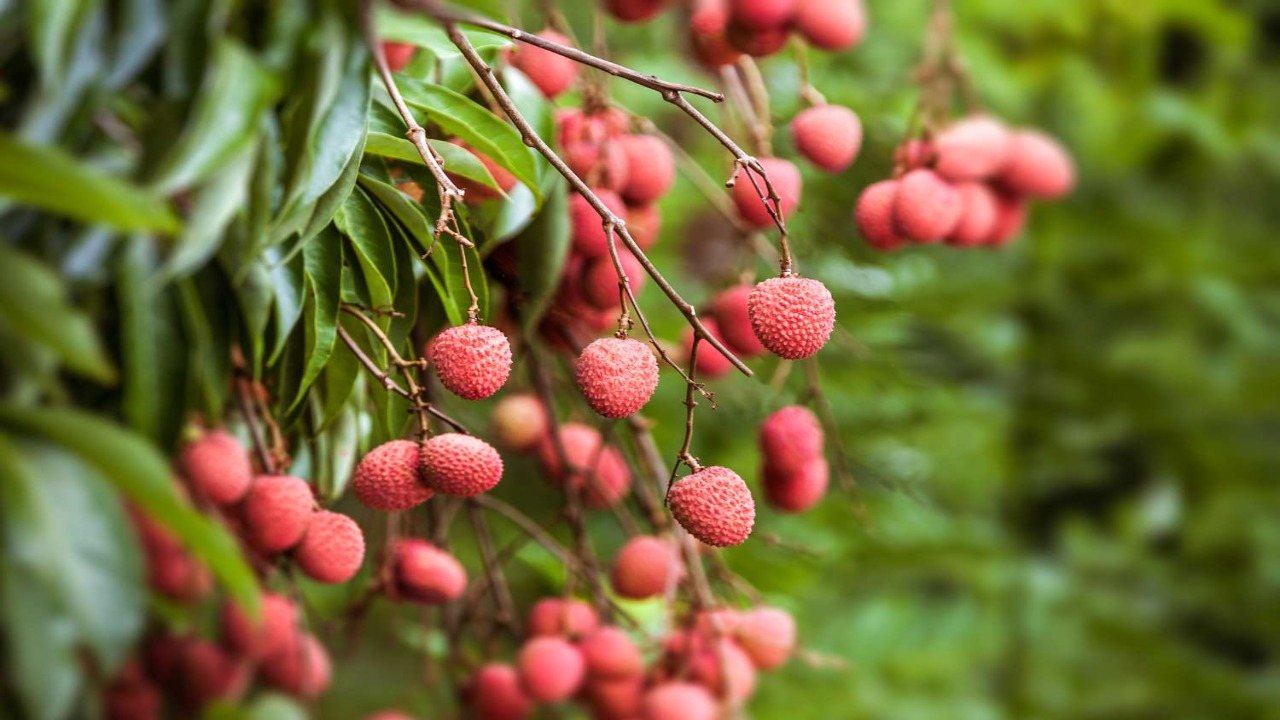
Growing tropical fruit in a greenhouse is a great way to enjoy these exotic fruits, even in non-tropical climates. While not all tropical fruits can thrive in a greenhouse setting, there are several types that can be successfully grown. By creating the right conditions, including temperature, humidity, and proper lighting, you can enjoy the taste of the tropics right in your backyard. Here is a list of tropical fruits that can be grown in a greenhouse:
- Bananas: With their large leaves and tall stems, bananas can create a lush and tropical atmosphere in your greenhouse.
- Pineapples: These juicy and sweet fruits can be grown in containers or directly in the ground of your greenhouse.
- Papayas: Known for their vibrant orange flesh, papayas can flourish in a warm and humid greenhouse environment.
- Passion Fruit: This tangy fruit, with its distinctive wrinkled exterior, can thrive in the controlled conditions of a greenhouse.
- Citrus Fruits: Many citrus fruits like lemons, limes, and oranges can be successfully grown in a greenhouse, providing fresh and zesty flavours all year round.
Factors To Consider When Choosing Tropical Fruits For Greenhouse Cultivation
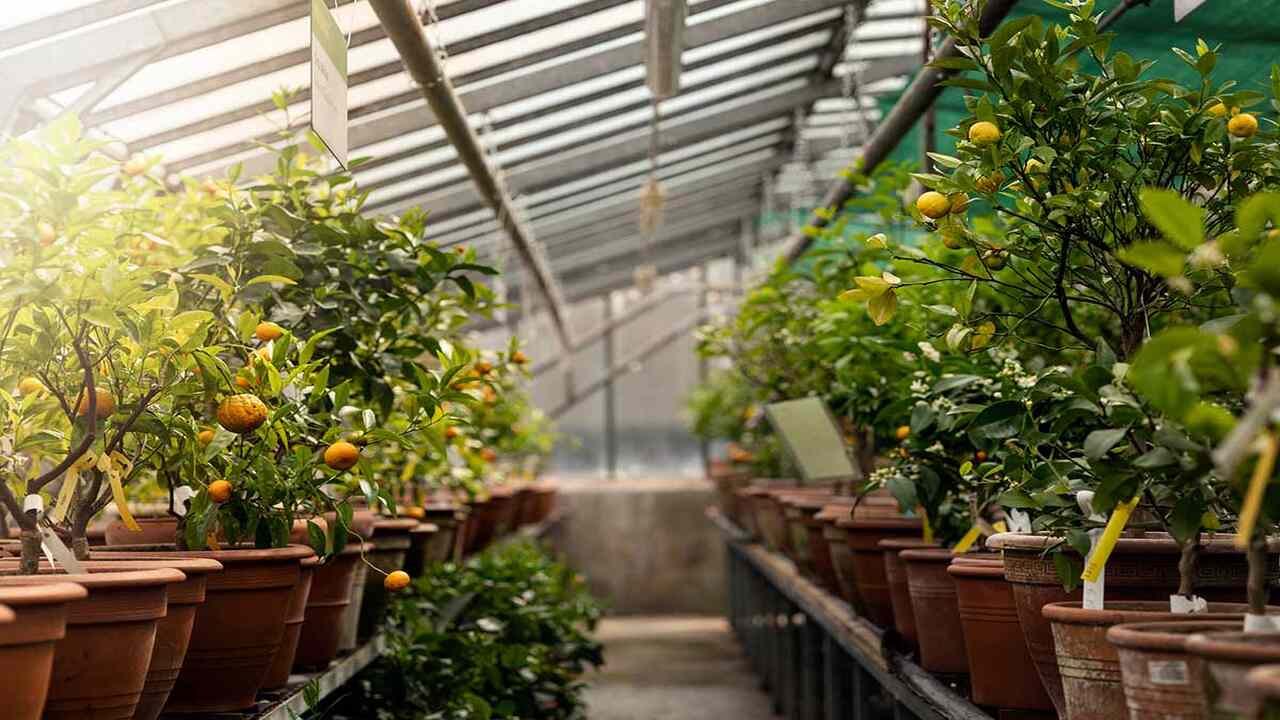
When considering growing tropical fruits in a greenhouse, there are several factors to consider. By carefully considering these factors, you can increase your chances of successfully growing tropical fruits in a greenhouse. Here are some tips to help you make the right choices for successful cultivation:
- Climate Suitability: Research the specific climate requirements of different tropical fruits and choose ones that can thrive in the conditions you can provide within your greenhouse.
- Space Availability: Consider the size and growth habits of different tropical fruit trees or plants. Ensure you have enough space in your greenhouse to accommodate their mature size.
- Light Requirements: Tropical fruits typically require high levels of sunlight. Make sure your greenhouse is equipped with sufficient lighting, or consider using supplemental grow lights.
- Temperature And Humidity Control: Tropical fruits prefer warm temperatures and high humidity. Invest in a temperature and humidity control system for your greenhouse to create optimal growing conditions.
- Pollination Needs: Some tropical fruits require cross-pollination for fruit set. Ensure proper pollinators are available, or consider hand-pollinating if necessary.
- Disease And Pest Management: Research common diseases and pests that affect tropical fruit plants and implement appropriate preventive measures or treatments.
The Benefits Of Growing Tropical Fruit In A Greenhouse
Growing tropical fruit in a greenhouse can offer a range of benefits for gardeners and farmers. The controlled environment of a greenhouse allows for optimal growing conditions, ensuring that the tropical fruit receives the right amount of sunlight, warmth, and humidity.
This can result in higher yields and better-quality fruit compared to growing outdoors in less favourable climates. Additionally, a greenhouse protects from pests and diseases, reducing the need for chemical pesticides. It also extends the growing season, allowing for cultivating tropical fruit that may not be possible in certain regions.
Common Challenges And Troubleshooting Tips For Growing Tropical Fruit In A Greenhouse
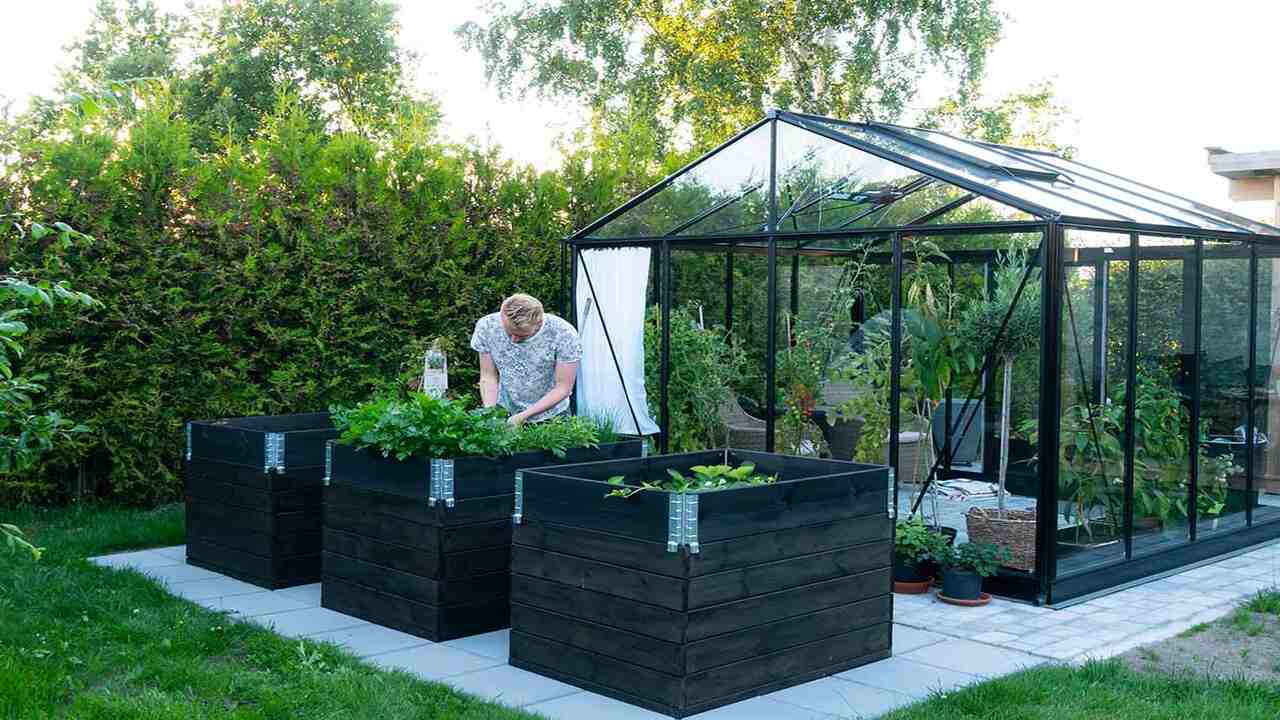
Growing tropical fruit in a greenhouse can be a rewarding experience, but it does come with its fair share of challenges. By being aware of these common challenges and implementing appropriate troubleshooting strategies, you can increase your chances of successfully growing tropical fruit in a greenhouse. Here are some common challenges you may face and troubleshooting tips to help you overcome them:
- Temperature Control: Tropical fruit typically thrives in warm temperatures, so it’s important to maintain a consistent and optimal temperature inside the greenhouse. Use a combination of heating and cooling systems to regulate the temperature and prevent extremes.
- Humidity Management: Tropical fruit plants require high humidity levels to thrive. Consider using misting systems or placing water trays near the plants to increase humidity. However, be cautious not to create an environment that is too damp, as this can promote fungal growth.
- Pollination: Some tropical fruit plants rely on pollinators for successful fruit production. If you’re growing these types of fruits in a greenhouse, you may need to hand-pollinate them using a soft brush or by gently shaking the plants.
- Pest Control: Greenhouses can provide a protected environment for pests to thrive. Regularly inspect your plants for any signs of pests and take appropriate measures such as using organic pest control methods or introducing beneficial insects like ladybugs.
- Disease Prevention: Diseases can spread quickly in the humid conditions of a greenhouse. Practice good hygiene by regularly sanitizing tools, pots, and surfaces. Also, ensure proper air circulation within the greenhouse to minimize the risk of fungal infections.
Harvesting And Storing Tropical Fruit From A Greenhouse

Harvesting and storing tropical fruit from a greenhouse requires some special considerations to ensure the fruit remains fresh and flavorful. By following these tips, you can ensure that your greenhouse-grown tropical fruit is as delicious as possible. So go ahead and indulge in those homegrown mangoes and pineapples. Here are some tips to help you make the most of your greenhouse-grown tropical fruit:
- Harvest At The Right Time: Tropical fruits are best harvested when fully ripe. This is when they will have the highest sugar content and be at their peak flavour. Take care to gently twist or cut the fruit from the plant to avoid damaging it.
- Handle With Care: Tropical fruits can be delicate, so handle them to prevent bruising or damage. Use soft padding or gloves when handling more delicate fruits like papayas or passionfruit.
- Clean And Store Properly: Before storing your harvested fruit, clean off dirt or debris. Store them in a cool, dry place away from direct sunlight. Some fruits may benefit from being stored in a paper bag or wrapped in newspaper to help absorb excess moisture.
- Enjoy Within A Few Days: Unlike store-bought tropical fruit, which is often picked before it is fully ripe, greenhouse-grown fruit should be enjoyed soon after harvesting for the best flavour. Most tropical fruits do not have a long shelf life once they are ripe, so plan accordingly and enjoy them while they’re at their best.
Tips For Caring For And Maintaining Tropical Fruit Plants In A Greenhouse
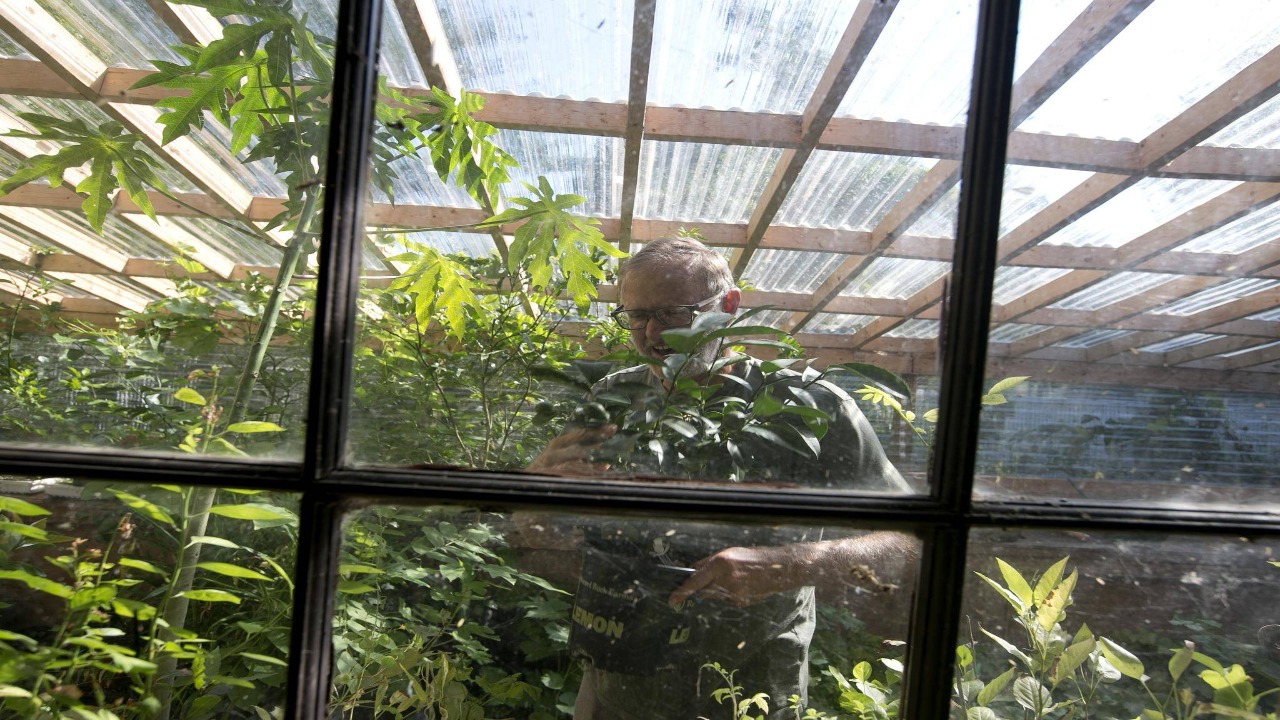
Caring for and maintaining tropical fruit plants in a greenhouse can be a rewarding experience. By following these tips, you can create an ideal environment for your tropical fruit plants and enjoy a bountiful harvest in your greenhouse. Here are some tips to help you successfully grow tropical fruit in your greenhouse:
- Temperature: Tropical fruit plants thrive in warm temperatures, so it is important to maintain a consistent temperature in your greenhouse. Aim for a temperature range of 70-85 degrees Fahrenheit.
- Humidity: Tropical fruit plants also require high humidity levels. Use misters or humidifiers to ensure the humidity stays between 50-70%.
- Light: Tropical fruit plants need plenty of sunlight to grow and produce fruit. Position your greenhouse in a location that receives full sun, or use supplemental lighting if necessary.
- Watering: Tropical fruit plants have high water requirements, so water them regularly. Keep the soil evenly moist, but avoid overwatering, which can lead to root rot.
- Fertilizer: Use a balanced fertilizer specifically formulated for tropical fruit plants to give them the nutrients for healthy growth.
Conclusion
Growing tropical fruit in a greenhouse is not only possible but also offers several advantages. With the right conditions and care, you can create a mini tropical paradise that allows you to enjoy exotic fruits all year round. Remember to choose the right tropical fruit varieties, provide optimal growing conditions, and regularly monitor for pests and diseases.
Harvesting and storing the fruits properly will ensure their long-lasting freshness. By investing time and effort into caring for and maintaining your tropical fruit plants, you can create a fruitful and rewarding greenhouse experience. So, it is essential to know how can you grow tropical fruit in a greenhouse.
Frequently Asked Questions
1.What Fruits Grow Well In A Greenhouse?
Ans: Many different fruits thrive in greenhouse environments. Citrus, figs, grapes, and strawberries are just a few examples. Tropical fruits like bananas, papayas, and pineapples can also be successfully grown. Providing optimal light, warmth, and humidity will help maximize growth and yield. With proper care, a greenhouse can supply fresh fruit year-round.
2.Can Tropical Plants Survive Winter In A Greenhouse?
Ans: Yes, tropical plants can survive winter in a greenhouse. Greenhouses provide a controlled environment with consistent temperature and humidity levels. Proper ventilation and heating may be necessary to protect the plants from extreme cold. Popular tropical fruit plants grown in greenhouses include bananas, papayas, and citrus fruits.
3.Which Fruit Trees Are Suitable For Growing In A Greenhouse?
Ans: Popular choices for greenhouse fruit trees include citrus trees like oranges and lemons. Other options are figs, peaches, and grapes. Due to limited space, dwarf varieties are recommended. Successful cultivation depends on controlling temperature and humidity.
4.Is There Anyone Here Who Grows Tropical Plants In Their Greenhouse In A Temperate Climate?
Ans: Yes, it is possible to successfully grow tropical plants in a greenhouse, even in a temperate climate. Greenhouses provide the ideal controlled environment for mimicking the tropical conditions that these plants require. Popular tropical fruits like bananas, pineapples, and papayas can thrive in a greenhouse with proper ventilation and temperature control.
5.Are There Any Special Precautions You Need To Take When Growing Tropical Fruit In A Greenhouse?
Ans: Special precautions must be taken when growing tropical fruit in a greenhouse. These fruits require high humidity and warmth, making a greenhouse an ideal environment. Adequate ventilation is crucial to prevent excessive moisture and fungal diseases.
Additionally, using a well-draining soil mix and regularly fertilizing with balanced nutrients promotes healthy growth. Monitoring temperature and watering regularly prevents stress, which can lead to dropped fruit or stunted growth.

